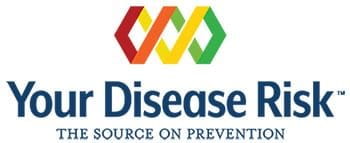Too much unprotected exposure to the sun’s ultraviolet (UV) rays can cause skin damage, eye damage, immune system suppression, and skin cancer. Even people in their twenties can develop skin cancer. It’s important to check in regularly with your primary care physician or dermatologist for skin cancer screenings and to discuss any concerns you may have.
Melanoma is a rare but dangerous type of skin cancer. And, like all types of skin cancer, getting too much sun is a main risk factor. Most scientists agree that the following aspects affect the risk of melanoma. Some may apply to you, but others may not. And some you can change, but others you cannot. Melanoma has few controllable risk factors. But it’s still important to know your risk and how these factors relate to it.
Things you can change:
Protect your skin from the sun – and help your kids do the same.
While childhood sun exposure is most important for melanoma risk, adult sun exposure is still harmful and can increase the risk of skin cancer overall. It’s important to protect yourself – and your kids.
- Use sunscreen with an SPF of 30 or higher.
- Re-apply sunscreen at least every 2 hours.
- Wear sun-protective clothing like broad-brimmed hats and long-sleeve shirts.
- Limit the time you spend in the sun, especially between 10:00 am and 4:00 pm.
- Seek shade. Bring an umbrella to the beach. Sit under a shady tree.
- Be a good “sun safe” role model for your kids.
Don’t use tanning beds.
Using tanning beds and sunlamps increases the risk of melanoma. Even just a small number of sessions can be dangerous. And the younger indoor tanning starts, the more dangerous it is. Avoid tanning beds and help your kids do the same.
Things you can’t change:
Age
The risk of melanoma goes up with age, but it tends to develop earlier in life than many other cancers. The average age at diagnosis is 63.
Physical features
People who have naturally light-colored hair, light-colored eyes, or fair skin have a higher risk of melanoma. This is because people with these features often have lower levels of pigment in their skin and are more likely to get sunburned. (Pigment gives skin its color. Higher levels of pigment make skin darker and help protect it from the sun.) Also, people with many moles on their skin are at higher risk that people with fewer moles. (Moles are darkened areas on the skin that are often brown or black and can be either raised or flat.)
Immunosuppressive medications
People who have taken immunosuppressive medication have a higher risk of melanoma. Immunosuppressive medications are very important and are used for different medical conditions. For example, after an organ transplant, these drugs are necessary to prevent the body from rejecting the new organ. However, they can also interfere with the body’s ability to respond to abnormal cell changes, which increases the risk of abnormal cell growth and cancer.
Family history
People who have a mother, father, brother, or sister with melanoma have a higher risk of the disease. This is because some cases of melanoma are linked to mutations (changes) in the genetic structure (DNA) of the body’s cells that can be passed from generation to generation.
This information shared by Siteman Cancer Center: Your Disease Risk. Developed by world-renowned experts, Your Disease Risk collects the latest scientific evidence on disease risk factors into one easy-to-use tool.
Find your disease risk: https://siteman.wustl.edu/prevention/ydr/.

